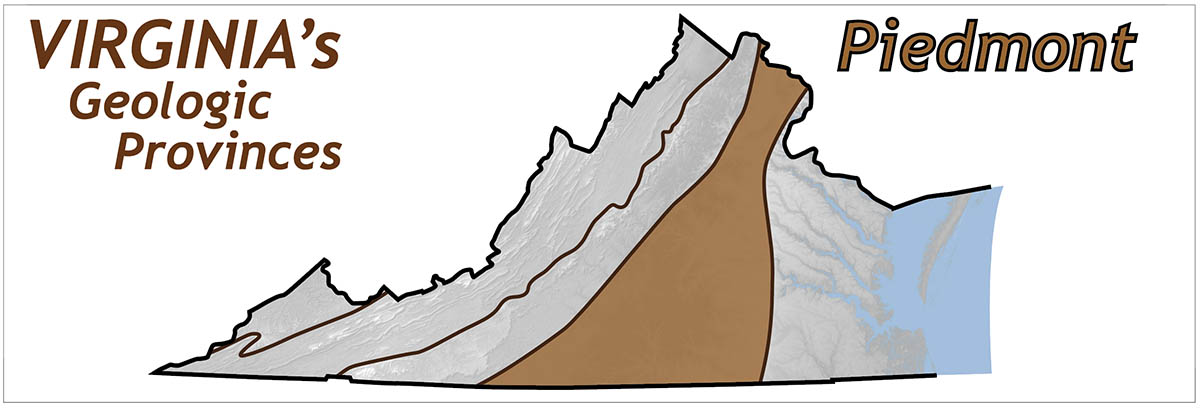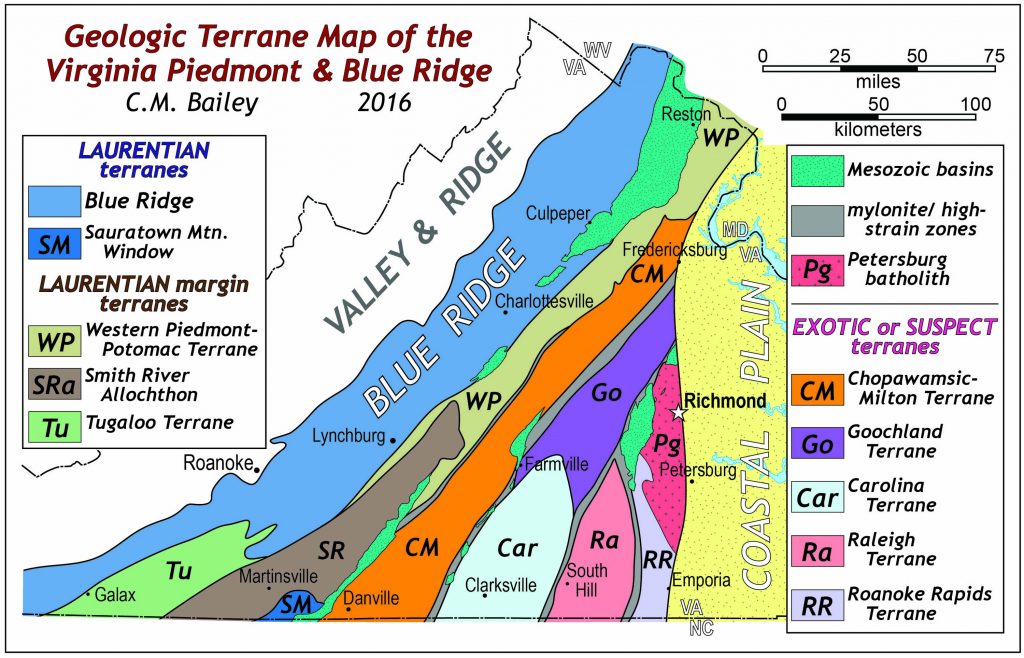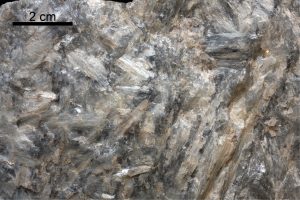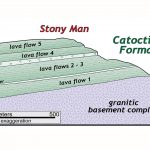The Piedmont is the largest geologic province in Virginia. It is bound on the east by the Fall Zone, which separates the province from the younger strata of the Coastal Plain, and on the west by the mountainous Blue Ridge province. The region is characterized by gently rolling topography, deeply weathered bedrock, and thick soils. Rocks are strongly weathered in the Piedmont’s humid climate, and bedrock is generally buried under a thick (2-20 m) blanket of saprolite. Outcrops are commonly restricted to stream valleys where saprolite has been removed by erosion. The topography becomes somewhat more rugged towards the Blue Ridge foothills, where local monadnocks of more resistant rock rise above the low-relief terrain.
The bedrock of the Piedmont includes an array of Proterozoic to Paleozoic igneous and metamorphic rocks that form the deep core of the ancient Appalachian mountain belt. Some metamorphic rocks in the Piedmont were buried to depths of ~30 km and heated to over 700˚ C.
Rocks exposed in the Piedmont experienced a complex geologic history. Some of these rocks are exotic with respect to North America. Packages of rock with distinctly different geologic histories, separated from one another by fault zones, are called geologic terranes. The oldest rocks in the Piedmont are ~1,070 million years old, and occur in the enigmatic Goochland terrane to the west of Richmond. Other terranes include Ordovician to Silurian igneous rocks that are the remains of ancient volcanic arcs (much like the present-day Aleutian Islands) that collided with, and accreted onto the eastern edge of North America during Appalachian mountain building. Granitic rocks of late Paleozoic age are common, and form large plutons in many areas of the Piedmont. Many terranes have experienced multiple episodes of metamorphism and deformation, resulting in a complex geologic puzzle with many outstanding geologic questions to be answered.
The region also includes Early Mesozoic (~225 to 190 Ma) sedimentary rocks, diabase dikes, and basalt flows that formed during the early stages of rifting associated with the opening of the Atlantic Ocean. These rocks are exposed in a number of structural basins known as half-grabens and grabens. Some Mesozoic basins preserve dinosaur, fish, and insect fossils. Coal was also deposited in swampy lowlands in some of these basins.
Notable economic resources in the Piedmont province include high-quality slate from the Arvonia Formation, which also hosts one of the world’s largest kyanite mines at Willis Mountain in Buckingham County. In Pittsylvania County, the Coles Hill deposit forms one of the world’s richest uranium deposits, but is currently undeveloped.





